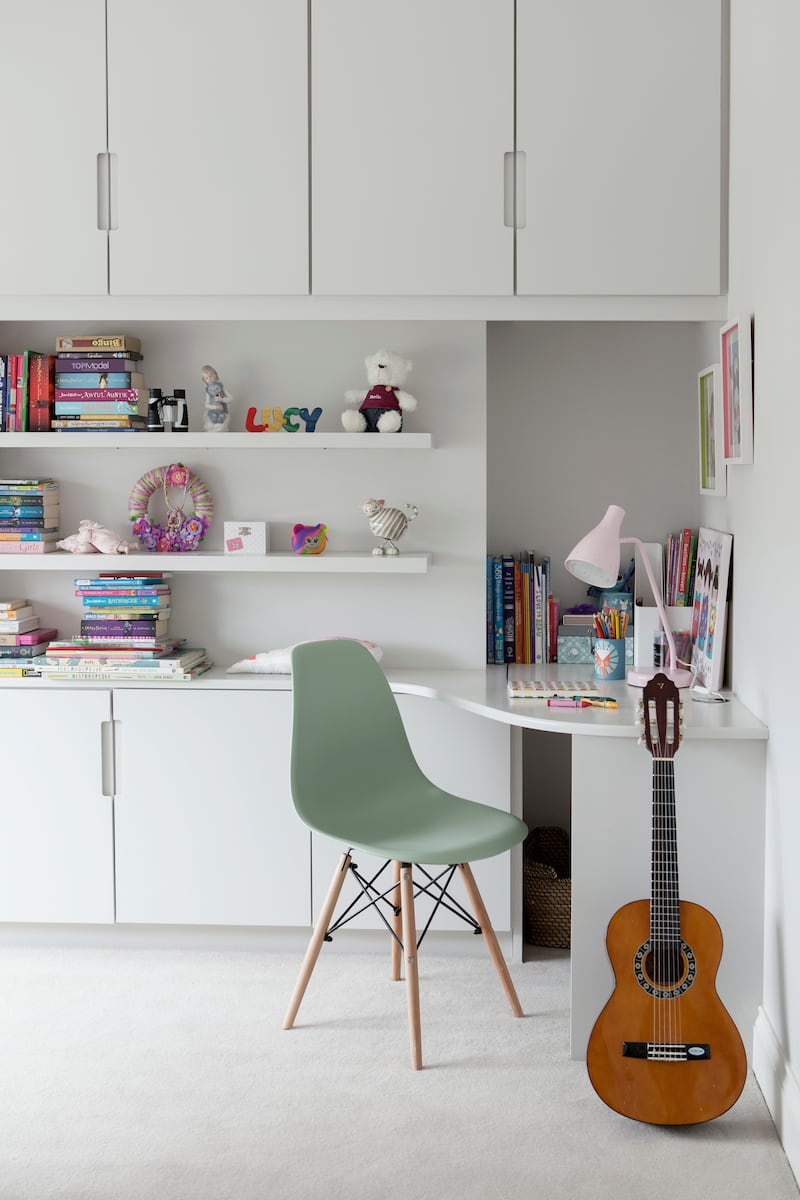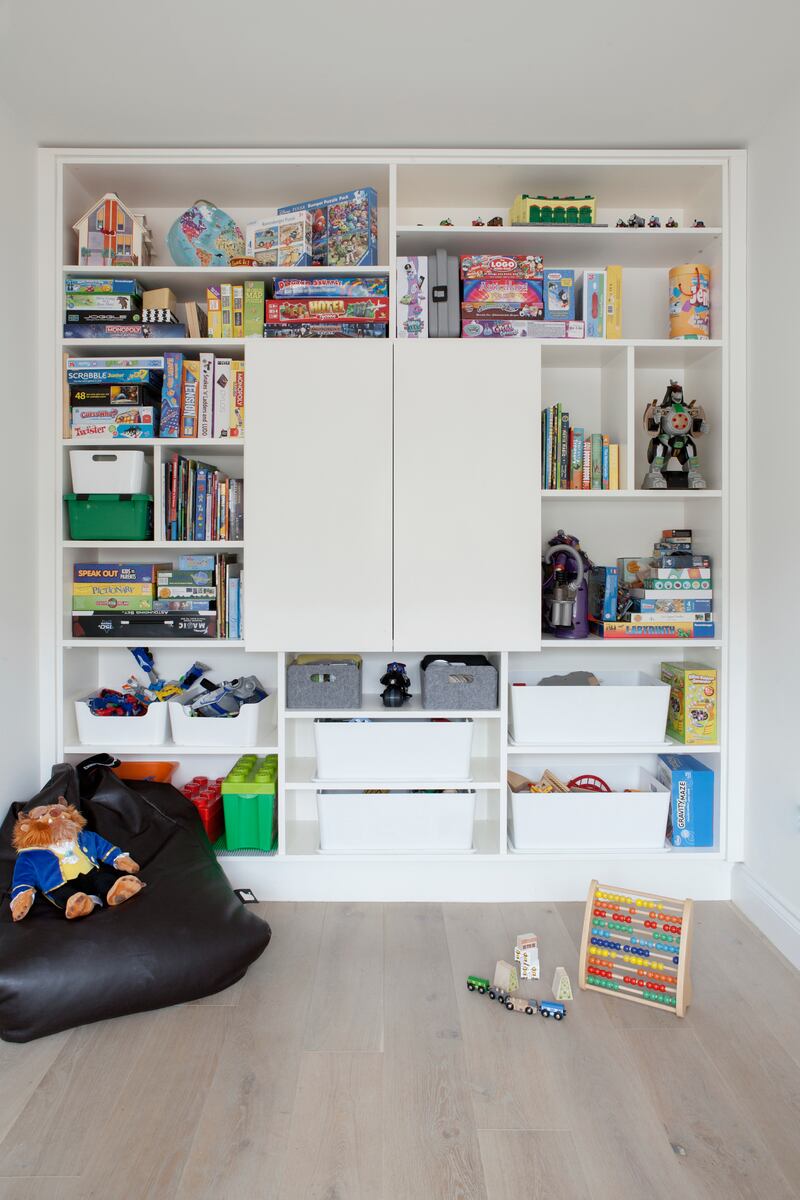With kids hopefully settled into school, and the house a little quieter for a few hours every day, it’s a great time to tackle a clear-out of your home and eliminate some of the kids’ clutter that’s accumulated over the summer. I spoke to home organisation experts Kim Fitzgerald and Lynn Luxford from A Sorted Affair to get their tips for clearing out and storing kids’ stuff.
How to get started
Sometimes the thought of starting a clear-out can feel overwhelming. Especially if you have a lot of rooms or areas in your home to deal with. Like any big goal, the trick is to break it down into smaller steps.
“Start small,” advises Fitzgerald. You might decide to tackle one room at a time. Or, if that’s still too daunting, split your decluttering into manageable daily steps like organising the coat cupboard one day and tackling your child’s bookshelves the next, and so on.
“Getting started is the key,” says Fitzgerald. “Break the job down into small manageable tasks. The satisfaction you feel from completing the first task will motivate you to keep going.”
Actor Armie Hammer resurfaces as host of celebrity podcast
Heart-stopping Halloween terror: 13 of cinema’s greatest jump scares
Doctor Odyssey’s core message: just imagine Pacey from Dawson’s Creek holding you tight and saying, ‘Shhh, it’s okay’
Conor Niland’s The Racket nominated for William Hill Sports Book of the Year

Should you get the kids involved?
You might think your kids won’t agree to part with anything and prefer to do a clear-out when they are not there. But Fitzgerald and Luxford like to get the kids involved. “You would be surprised how much children enjoy taking part. It’s all about how you approach it with them,” says Luxford.
Fitzgerald and Luxford use a traffic-light system to help kids decide what to keep and get rid of. The child is given green, red and yellow stickers and asked to place a green sticker on anything they want to keep. Red is for items that can go and yellow is for anything they are unsure about. “It doesn’t have to be stressful,” says Luxford. “It can be a lovely time to spend with your kids rediscovering old toys and memories,” she says.
Involving your children and allowing them to be part of the decision-making process makes it easier for them to part with things. It’s essential to explain to them where their stuff is going. Children respond well to learning about how their things will make other kids happy. It’s also comforting to learn that their toys are not just going in the bin. Explaining the benefits of what you are doing to them and letting them know that once they clear out their space, they will have room for more stuff is also a great way to get them on board.
The best way to get rid of things
Once you’ve identified all the things you and your children are happy to part with, consider donating or giving them away instead of throwing them out.
“Community creches, and playgroups are always looking for toys to keep kids entertained,” says Luxford. She recommends reaching out to such places in your area to see if they would be interested in what you have to donate.
Many charity shops will take kids’ stuff and some, such as NCBI and the Irish Deaf Society, offer a home collection service. Teddy Bears, soft toys and blankets can all be donated to Dogs Trust. Freecycle is a brilliant resource for giving items away. You’ll be amazed at what people would love to get their hands on.

Storing kids toys
Kids need a clean, clear space to play. They like to know where things are and be able to find them when they want them. So it’s a good idea to use as much vertical wall space as possible for storage and keep the floor space clear for play.
Open shelves that can hold storage boxes are ideal for organising kids’ toys. Clear boxes are a great choice as kids will be able to see what’s inside.
Craft things can be challenging to keep organised. Fitzgerald recommends using a series of small boxes to kit out a larger container or drawer. You don’t need to buy anything specific; repurpose some old mobile phone boxes, for example, and use them to store each of the different types of craft materials like glitter, lollipop sticks and beads, etc. Storing the materials like this will make them easier for your child to use.
Lego is another toy that can be challenging to keep organised. Clear shoe boxes are great for storing loose Lego pieces, says Luxford. Group the pieces by colour or groups of colours. Something like the clear acrylic shoe boxes available in sets of three from Dunnes Stores are ideal.
Keeping order
Store like-for-like items together in one location rather than in multiple locations throughout the house. For things that tend to accumulate, like artworks or Lego creations, use a rotation system for displaying them in place. Photograph them before getting rid of them or, better yet, make a memory box for each child where their favourite creations can be kept safely.
“Keeping order is a habit,” says Luxford. “Once you have a clean slate, everyone needs to get used to putting things back in their place when they’ve finished using them,” says Fitzgerald. “It might take a bit of getting used to but once you have a system in place, it will make life run much smoother,” she says.
Denise O’Connor is an architect and designer at optimise-design.com





